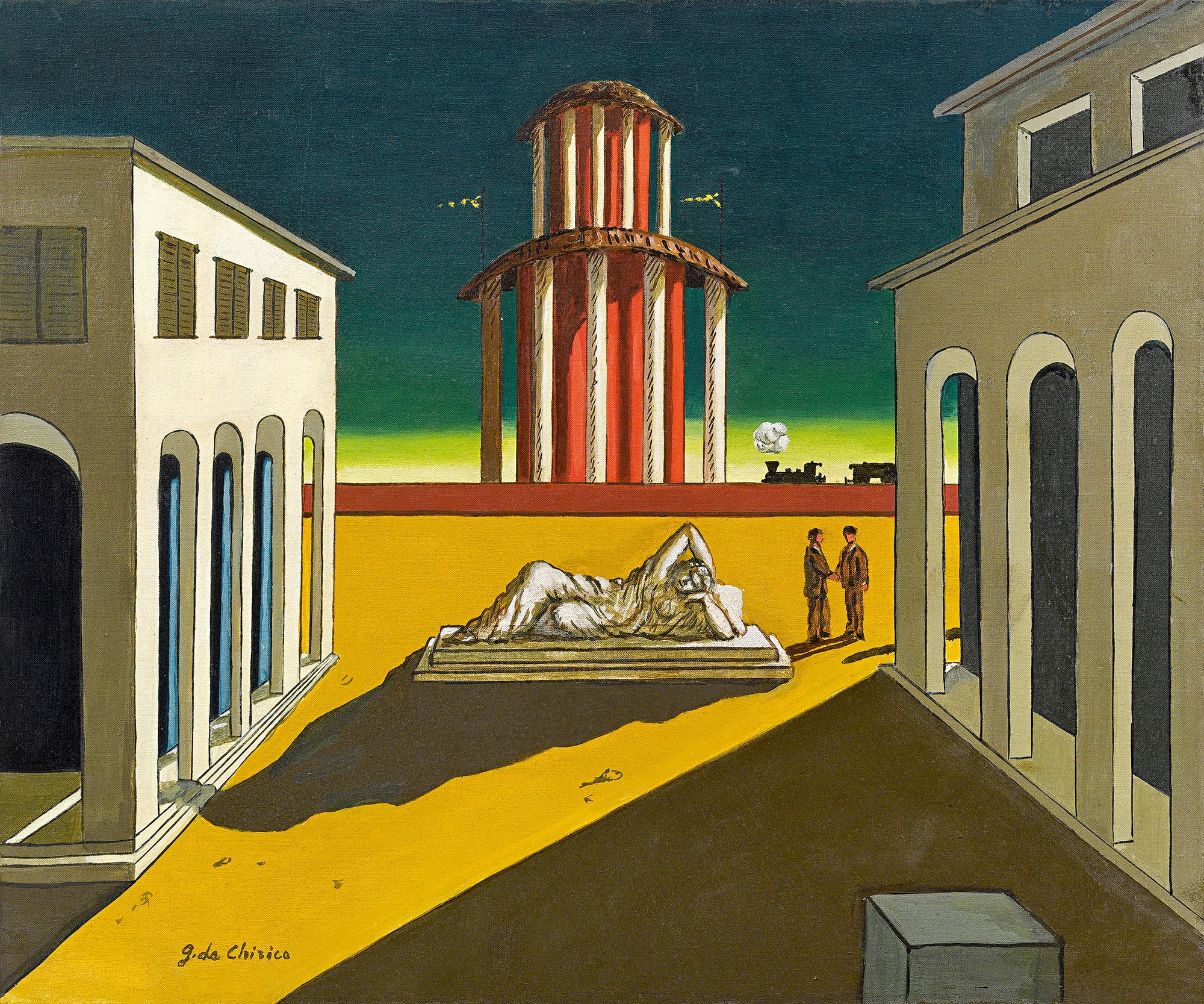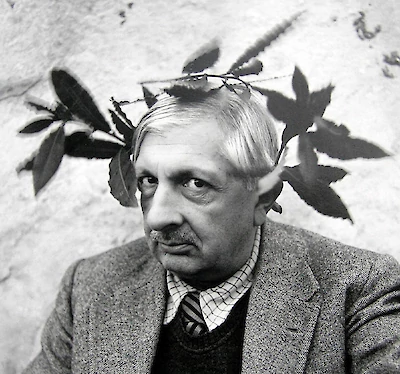

Giorgio de Chirico
Enchanted spaces in the city of Nietzsche
1888 – 1978Sensitiveness, in life as in painting and all forms of art, is incontestably a quality appertaining to the human being who possesses it. It is much easier to recognise the sensitiveness of a human being in life than the sensitiveness of an artist in his work, however, I will speak of sensitiveness in art further on. In life, too, living, as we are, in a period flooded with words, human beings are not satisfied with words only; and though a man may make as many speeches as he please, making manifest the most refined sensitiveness, he will not be believed in and admired with sincerity unless his words be – at least from time to time – confirmed by actions. Besides, to be truly sensitive in life, a human being must possess many other qualities; for one cannot conceive of a human being endowed with sensitiveness alone; with sensitiveness as his sole intellectual quality, while being in every other respect unintelligent, wicked, envious, miserly and gossipy. The sensitiveness which is attributed to a given human being is inconceivable unless the spirit of this human being be, as a whole, noble, full of goodness and endowed of course with a certain intelligence.
In other words, sensitiveness as a moral quality is never found alone, but forms part of a whole ensemble of superior qualities united in the character and intellect of a man or woman. This truth is clear and can be understood by all; to call it into question is pointless. Instead, with regard to art, almost everyone’s ideas are confused. Today, when referring to a work of art, human beings take real pleasure in using words which have a logical meaning when applied to life, but whose sense – when applied to works of art – changes, even to the extent of sounding absurd. For instance, it is often said of a picture: this picture is not extraordinary, it is nothing remarkable, but “it shows great sensitiveness”. In other words, its only quality – a quality entirely divorced from all other positive qualities (which are apparently lacking in this case) – is sensitiveness. This would imply that the picture in question – a picture possessing sensitiveness – is in every other respect stupid, badly drawn and badly painted by an artist undoubtedly devoid of all talent; whilst talent is the first thing we should consider when judging a work of art.
Let us therefore examine whether we can or cannot accept the hypothesis that in a work of art, as in life, sensitiveness must necessarily form part of a whole group of qualities which, in a painting, either exist all together or do not exist at all.
The innumerable words which are part and parcel of the vocabulary of so many dilettante and ignorant critics and intellectuals – words like “sensitiveness”, “sincerity”, “emotion”, “spontaneity”, “purity” and so on and so forth – can only be used to define in detail qualities that already exist in a work of art and none of these qualities can exist as an isolated and detached phenomenon.
The way in which a sensitive person reacts to life is known to us either by experience or by hearsay. But the way in which sensitiveness makes itself manifest in art and in painting is known only to the very few who know the way in which the sensitiveness factor functions in a work of art. You may now ask me how the word sensitiveness comes to be heard on so many lips. The word is heard from many lips, yes; but from few minds. And this is understandable, for sensitiveness as understood by modernist painters and intellectuals does not exist in painting; it is the invention of the modern critics who, having no clear and interesting ideas to express, have created a complete special vocabulary which in actual fact has no meaning at all, but which has been naively and passively adopted by many people desirous of appearing shrewd and subtle art connoisseurs.
I repeat therefore that the critics have created a language the majority of whose words are in no way fit to be applied to a work of art. This modern jargon seems to have been invented with the express purpose of increasing the stupidity and confusion already reigning in the minds of men.
In life a human being’s sensitiveness can by tested by facts; but sensitiveness – I maintain – when applied to a work of art does not exist. And when someone, speaking of a picture, tells me that it shows sensitiveness, I can only reply that I am ready to believe as much, but only on condition that it can be proven.
Another word which is very fashionable today and yet is devoid of all meaning, is sincerity. This word is quite frequently applied to works of art: what does “sincerity” mean to an artist? One can be sincere in friendship, love, business, social relations in general, that is, in life, but in art one is always sincere; this means that by force majeure an artist is always sincere in the exercise of his art.
The artist always does that and that only which he is capable of doing; he cannot surpass himself, for he can only attain the level which his talent and his artistic abilities allow him to reach. Besides, an artist will never try to do less than that which he is capable of doing. Remember what I have told you several times – in art, it is not the subject but only quality that matters.
The value of an artist consists not in what he does, but solely in how he does it. Rest assured, you critics and intellectuals, in art things do not take place as they do in your speeches; in art everyone is sincere. And to conclude, I want to add this: if your speeches are not always sincere, oh critics and intellectuals, console yourselves: for, whenever you speak and whenever you write, you always reveal the degree of your intelligence with the utmost sincerity.